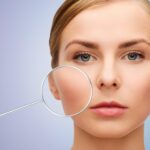Prosopagnosia (Face Blindness) is a cognitive disorder that leads to a person finding it difficult to recognize familiar faces, and something’s the person’s face. It originated from the Greek word prosopon meaning face and agnosia, which comes from the medical terminology for lack of recognition.
People diagnosed with Prosopagnosia are called prosopagnosics. Prosopagnosics struggle to identify or recognize their partners and spouses, family members, themselves through the mirror, and close acquaintances.
According to a recent survey, about 2 percent of the general public may suffer from some level of Prosopagnosia.
How to Diagnose Prosopagnosia?
People with symptoms of Prosopagnosia or people who struggle to recognize the faces of people close to them are often referred to a neurologist.
The neurologist will evaluate your ability to recognize faces, ascertain the age and sex of the person and detect emotional signals. Here are the common know ways of diagnosing Prosopagnosia.
- The Cambridge Face Perception Test, and
- The Benton Facial Recognition Test,
- The Warrington Recognition Memory for Faces,
- The Cambridge Face Memory Test.
Types of Prosopagnosia.
There are two types of Prosopagnosia namely acquired and Congenital Prosopagnosia.
Acquired Prosopagnosia
Acquired Prosopagnosia is when a person develops Prosopagnosia as a result of brain damage following a head injury, stroke, traumatic brain injury or neurodegenerative diseases such as Alzheimer’s disease can lead to Prosopagnosia.
People with Acquired Prosopagnosia may not be able to regain their ability to identify or recognized faces although Acquired Prosopagnosia is uncommon.
Congenital or Developmental Prosopagnosia
Congenital Prosopagnosia is when a person develops Prosopagnosia from birth. That is he or she is born without the ability to identify and recognize faces. Children born with Developmental Prosopagnosia get to know their ability not to recognize faces when they grow older.
Some studies suggest that Congenital or Developmental Prosopagnosia can be inherited as the condition may run through the family.
Children with Autism may also suffer from congenital prosopagnosia.
Causes of congenital prosopagnosia
According to recent research. Prosopagnosia is caused by developmental problems or damage to the part of the brain called the fusiform gyrus.
The fusiform gyrus is the part of the brain that coordinates the neural systems that memory and control facial perception.
Doctors at Stanford conducted research in 2012 by implanting electrodes in the brains of Prosopagnosia patients and uncovered that two nerve clusters are integral in recognizing faces. Scientists are still not come to a common conclusion as to whether prosopagnosia is a general disorder of recognizing faces or a faces-specific disorder.
From types of prosopagnosia, prosopagnosia can be caused by head injury, stroke, traumatic brain injury, or neurodegenerative diseases. And can be a genetic condition as some people are born with prosopagnosia.
Symptoms of prosopagnosia
- Inability to recognize familiar faces
- Having trouble identifying the faces of friends and family.
- Inability to distinguish between the faces of friends and family members.
- Being unable to distinguish between unfamiliar faces
- Having difficulties in distinguishing between faces and other stimuli.
- Inability to recognize one’s own face in a mirror or pictures.
- Struggling or having difficulties recognizing and perceiving facial features.
- Unable to identify additional characteristics linked to facial traits, such as age, gender, or race.
- Inability or struggle in recognizing and perceiving facial expressions.
Treatment of prosopagnosia
Currently, there is no formal treatment for prosopagnosia. However, Scientists and researchers are conducting research and investigating what are the remote causes of prosopagnosia. Other workaround programs and strategies are being developed to help Prosopagnosics gain their ability to recognize or identify family members, friends, and partners’ faces.
Compensatory strategies such as using the person’s hair, height, clothing, he or she walks and the person’s voice can help people with prosopagnosia regain their recognition ability. It may work for both Acquired and Congenital Prosopagnosia. People with Prosopagnosia can get more information from the Center for Face Processing disorder on coping strategies for prosopagnosia.
Frequently Asked Questions about Prosopagnosia FAQs
Can prosopagnosia be cured?
There is no cure for prosopagnosia. But Compensatory strategies can adopt to help persons with Prosopagnosia improve or gain their facial recognition.
Prosopagnosics are often shy and withdraw from social situations. This can lead to depression, Medications and Therapy can help solve the depression associated with Prosopagnosia.
How does prosopagnosia relate to sensation and perception?
Prosopagnosia is a disorder in the ability to recognize faces. And it is mostly acquired through a brain lesion like trauma, stroke, and brain damage or occurs as a developmental variant, especially in children with autism.
Perception researchers find prosopagnosia people interesting because their face and object recognition ability and deficits can disclose much about how intact visual systems process faces and objects.
What prosopagnosia look like
Certain prosopagnosics are unable to recognize specific facial expressions, identify a person’s age or gender, or follow their gaze. Some people could even struggle to recognize their own faces in pictures or in the mirror. A person’s ability to recognize items, such as locations or vehicles, may be impacted by prosopagnosia.
Where does prosopagnosia occur in the brain?
The right fusiform gyrus is part of the brain where prosopagnosia occurs. The right fusiform gyrus coordinates the neural systems that regulate facial perception and memory. Stroke, traumatic brain damage, or specific neurodegenerative illnesses can all cause prosopagnosia.
Who are the popular people or public figures with prosopagnosia?
- Robert Gascoyne-Cecil, 3rd Marquess of Salisbury (1830–1903)
- Margaret Kerry (born 1929) is an American actress and the reference model for Tinker Bell
- Oliver Sacks (1933–2015) was a British neurologist
- Jane Goodall (born 1934) is an English ethologist primatologist, anthropologist, and Zoologist
- Karl Kruszelnicki (born 1948) is an Australian science communicator
- Chuck Close (1940–2021) is an American painter
- Duncan Bannatyne (born 1949) is a Scottish entrepreneur, author, and philanthropist
- Steve Wozniak (born 1950) is an American computer engineer and co-founder of Apple Inc.
- John Hickenlooper (born 1952) is a former Governor of Colorado and US Senator
- Jim Woodring (born 1952), American cartoonist
- Stephen Fry (born 1957) is an English broadcaster, actor, comedian, writer, and film producer.
- Mary Ann Sieghart (born 1961) is an English journalist and radio presenter
- Dave Chalk (born 1963) is a Canadian entrepreneur
- Markos Moulitsas (born 1971) is an American blogger and former member of the military
- Paul Foot (born 1973) is an English comedian
- Victoria, Crown Princess of Sweden (born 1977)
- Sara Benincasa (born 1980) is an American comedian and author
- Brad Pitt (born 1963) is an American film producer and an actor














